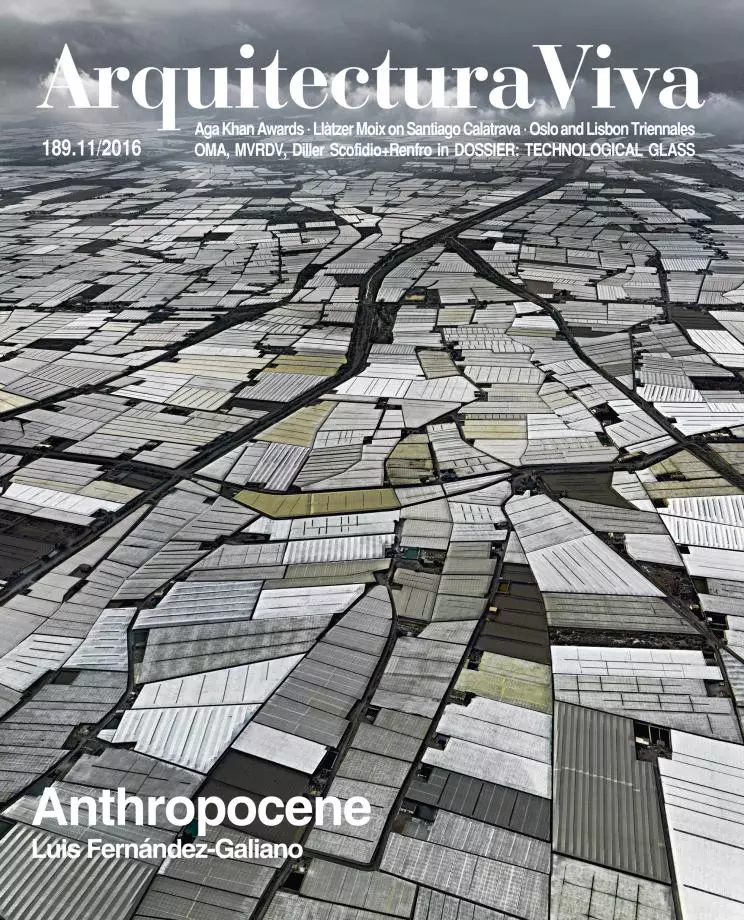Architecture and Life
Anthropocene, Fifteen Theses
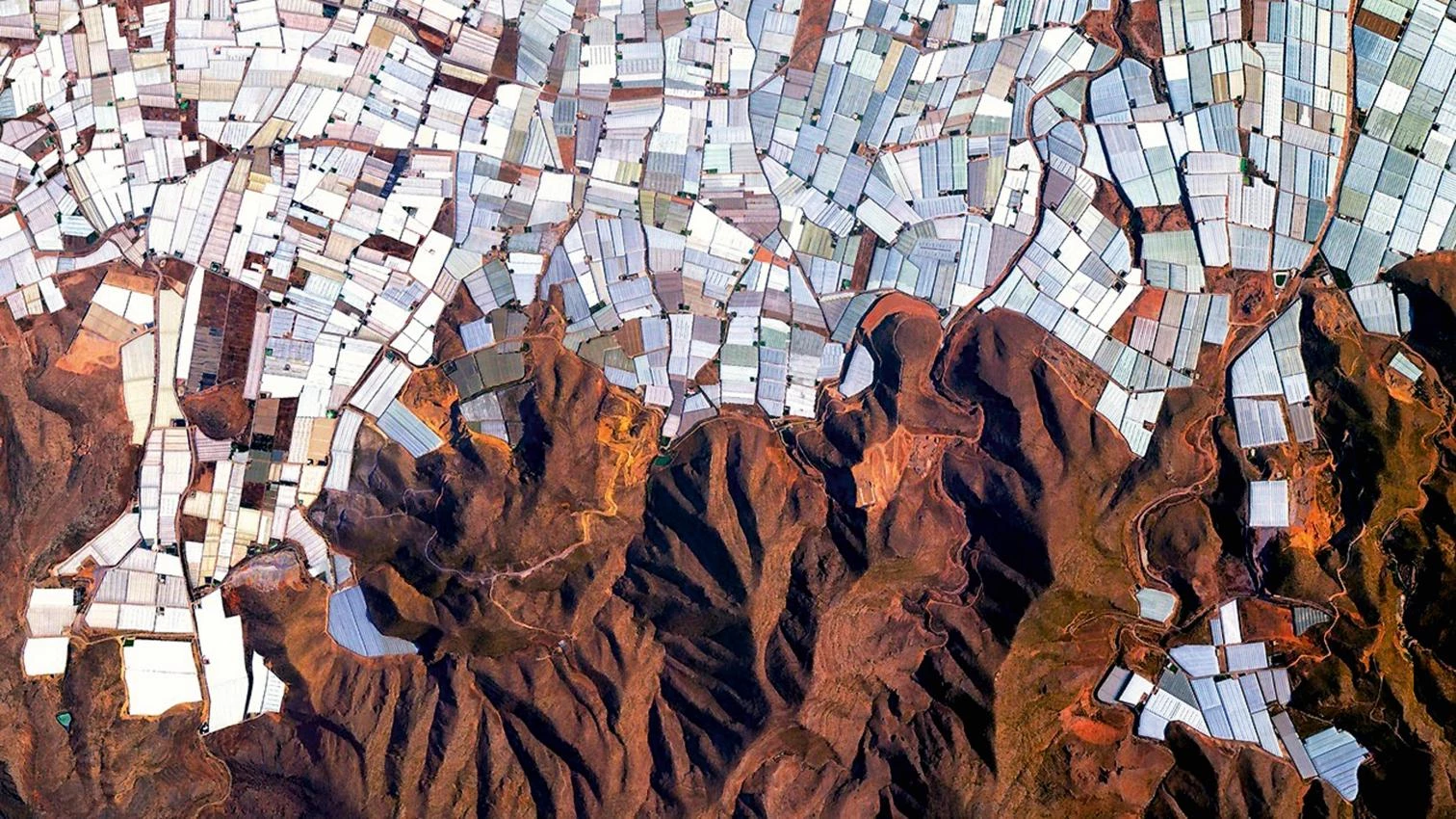
The following text was the lecture that I delivered when I was admitted into the Spanish Royal Academy of Fine Arts on 22 January 2012, and which was published for the occasion in the usual form of a booklet, with the limited circulation that academic publications inevitably have. As stated in the introduction to the lecture proper, I meant the address to be “an urgent synthesis of the state of the planet, its cities and its landscapes: an alarming but spirited diagnosis that hopefully will move us to reconcile architecture with life in the framework of our mutating arts.” Already in the first paragraphs it situated the reflection in the context of the Anthropocene, the current epoch of the Quaternary Period, “characterized by the radical anthropic modification of the Earth’s crust.”
Five years after that event, the scientific community’s growing acceptance of the term proposed by Paul Crutzen, combined with the recommendation of its use that was put forward at the International Geological Congress held last August by the Working Group on the Anthropocene (WGA), prompts me to give greater dissemination to what I presented in that academic occasion, in my conviction that the diagnosis offered then remains valid in essence.
With hardly any alterations – omitting only the presentation where I praised my predecesor in holding the Academy’s tenth medal, the architect José Antonio Corrales, as well as Rafael Moneo’s formal response to my delivery – the lecture, which was titled Architecture and Life: The Arts in Mutation, is reproduced here in its entirety. Divided into three sections (‘A Man-Made World: TheArtificial Around Us,’ ‘Our Horizontal Babel: The Sprawling City,’ and ‘The Age of Spectacle: From Cries to Whispers’), and each of these in turn into five chapters, the lecture is in this publication enriched with fifteen large images by photographers, artists, or architects that with their visual eloquence support the points developed in the text.
Manufacturated Environment
Planetary Frontiers

We live in a fabricated world. Under the human impact, the planet has transformed to such a degree that geologists propose a new name for the age that begins with the Industrial Revolution: after the Pleistocene and the Holocene, the Anthropocene – a term coined by the Nobel Prize in Chemistry winner Paul Crutzen – would be the third epoch of the Quaternary Period, characterized by the radical anthropic modification of the Earth’s crust. The actions of our species, which since the time of the Neolithic Revolution and the appearance of agriculture 8,000 years ago have been responsible for considerable alterations in ecosystems, have accelerated vertiginously in the past two centuries. Through the consumption of fossil fuels deposited over hundreds of millions of years, humanity has multiplied its capacity to shape the globe to satisfy the growing needs of an ever expanding population. In doing so we have altered the carbon cycle in the same way that artificial fertilizers, without which the planet would not be able to feed 7,000 million people, have radically modified the nitrogen cycle. Through great works of engineering, urban construction or mining and agricultural exploitation, we are reshaping a world where already nearly everything is artificial. How could we possibly speak of architecture today without putting it in this context?
On the planet today there are more planted trees than wild ones, and there is more biomass in humans and cattle than in all the other large animals combined. A single engineering project can move more ground than rivers drag with them to the sea, and our actions are transforming the morphology of the coasts, the hydrologic cycle, the chemistry of the oceans and the fluctuations of climate. In a remote past, changes in the availability of energy brought on substantial mutations in the way the world functioned, and leaps in the level of atmospheric oxygen 2,400 and 600 million years ago gave rise to the appearance first of complex cells, then of large organisms. The Anthropocene could well be the third great oxidation of the planet if the collective intelligence of humanity manages to bring on a transition from fossil to renewable sources of energy, and continue the process of reshaping the world through geo-engineering. But while this visionary project materializes, we would do well to try as much as possible to maintain the conditions that allowed the stability of the Holocene, as the scientists concerned about ‘planetary frontiers’ advise, and prevent the gradual, barely perceptible changes from exceeding thresholds or limits beyond which mutation is sudden, irreversible and probably catastrophic.
Challenges and Risks
From Climate to Energy
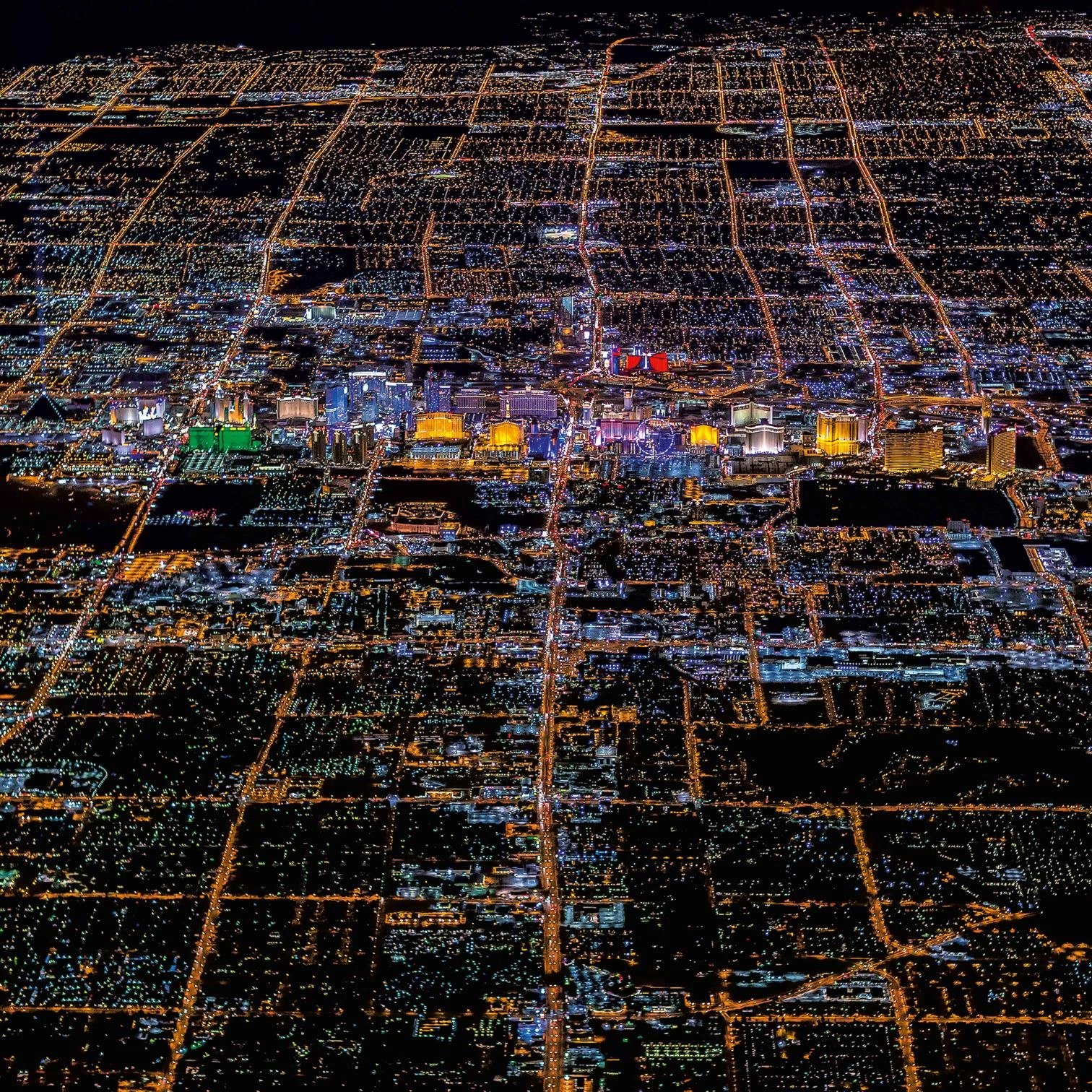
Humankind’s formidable capacity to alter the environment has come with huge challenges and huge risks. Climate change caused by carbon dioxide emissions, by now much documented with solid scientific proof, is the most notorious of them, but not at all the only one. The progressive depletion of fossil fuel reserves is another of the risks that constitute a challenge, in this case of a colossal dimension considering how industrial production, the urban model and transport systems all critically depend on oil and gas. The two processes are closely related, to be sure, since the emissions responsible for climate change are associated with the use of fuels, and in turn the melting of Arctic ice produced by the rise of temperatures is opening up new maritime channels in the north of America and Eurasia, creating access to large reserves of fossil fuels. In the short run, the mutation of the climate will benefit the northern zones of our hemisphere, but to a larger extent bring harm to the millions who live in the deltas of the great rivers, which will flood with rising sea levels, and to the countries with more temperate climates such as Spain, which will suffer desertification. But in the middle run, the growing scarcity of fossil fuels will force everyone to look for transition formulas that work to lead us from the current economy dependent on energy deposits to one reliant on energy flows, and therefore to the progressive shift from using up reserves to tapping renewable sources.
Carrying out this process, which requires profound transformations in production and in the territory, and doing so in a way that would ensure the planet’s capacity to maintain 10,000 million people – ten times the world population at the start of the Industrial Revolution – is a challenge loaded with risks, because while it excludes a bucolic return to a romanticized preindustrial past, it demands certain instruments of planetary governance that have yet to come into existence. What we have come to call globalization has created a tight network of material and immaterial webs – from production and transport to finances and communications – that make us all interdependent, but it has not yet forged the political and institutional mechanisms that would guarantee the stability of the system, threatened as it is, as much by the geostrategic mutations brought on by the decline of the West vis-à-vis the emerging countries of Asia and the rest of the world, as by the deterioration of ethics and responsibility in most ruling elites. Although the process will indeed have winners and losers, the dramatic likelihood of convulsions sparking military conflicts makes it now necessary to concentrate on preserving a stable and sustainable global system.
The Science of Heat
Preserving the Existing
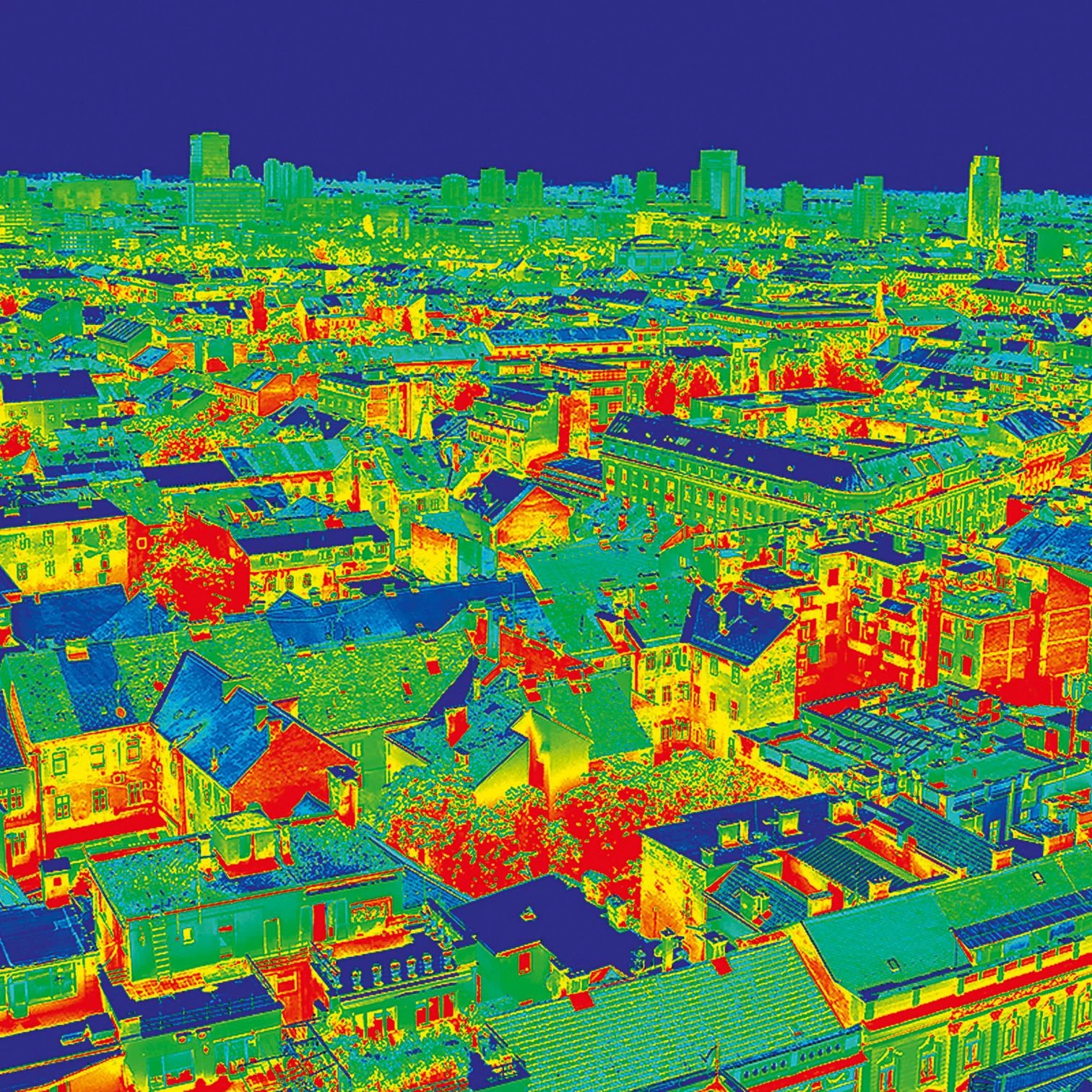
Thermographic inspection
The effort to prevent the planet from losing its balance probably requires an acknowledgment of the physical limits to growth, which have an important energy dimension. Definitely both demographic and economic growth are limited by the availability of food and prime commodities, and the supply of both has a significant spatial component because cultivation and extraction – like transformation, distribution and consumption – must be interpreted in territorial terms. Nevertheless, the food fed to people and the raw materials fed to industry could be seen as solidified energy flows, and even space lends itself to quantification in energy terms if we consider the force necessary to defend it and the work needed to build the communication networks that make it accessible. In this way, energy presents itself as an analytical tool with which to evaluate the cost of products and processes, and in this way estimate the limits set by the availability of renewable sources. Thermodynamics then emerges as a scientific instrument at the service of social planning, and even as a new paradigm that modifies the landscape of thought by introducing entropy and irreversible time.
The building and maintenance of the physical environment, which requires enormous quantities of high-quality energy, ought to be the object of special attention because territorial infrastructures, as much as urban fabrics, are costly artifacts in the thermodynamic balance. We are often reminded that the heating and cooling of buildings and the fuel of vehicles – two variables closely related to urban and territorial models – are responsible for half the energy consumption in contemporary industrial societies, but rarely is it mentioned that both city building and the construction of transportation networks require using huge amounts of energy, which accumulates in them like a valuable thermodynamic capital in need of protection against the erosion of time, obsolescence or abandonment. Regenerating what already exists – for which a collective appreciation based on custom or beauty is indispensable – seems to be an efficient energy strategy as it uses part of the thermodynamic gain to maintain the capital deposited in the structures built by previous generations. In fact, even the monetary capital or the social capital incorporated in institutions and habits can be interpreted as immaterial deposits of energy invested in the past, extending to the symbolic domain the thermodynamic pertinence of conservation, which spreads beyond the material terrain to subtly penetrate the intangible sphere of the virtual.
Digital Heyday
Project and Paradigm
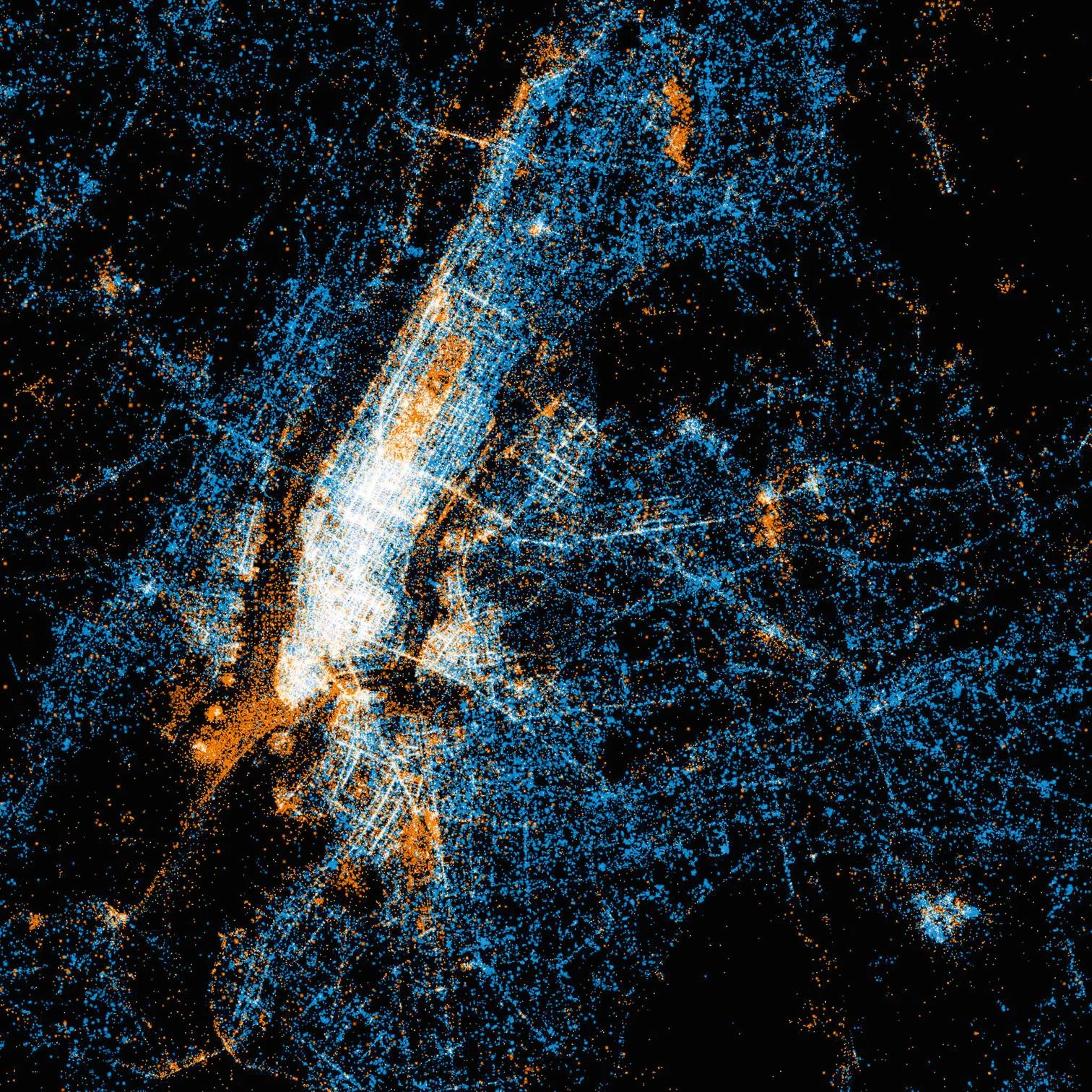
In the final decades of the 20th century, the extraordinary development of computers and information science has justified the frequent use of the term ‘digital revolution’. In fact, the digital has come to offer itself as a referential framework replacing the mechanistic as intellectual tool and technical scape. The oil crises of the 1970s proposed the entropic pessimism of thermodynamics as a scientific paradigm of response to the epistemological and material ruin of the mechanistic, but the optimism sparked by the end of the Cold War and the proliferation of cheap money at the close of the century led to looking to the digital for an alternative paradigm, which, still newly coined, would suffer the erosion brought on by the bursting of the dot.com bubble, the real estate bubble and the loan bubble. Even so, and despite the difficulty of sustaining the virtual utopias engendered by the mirage of transcending the realm of need, the digital has brought about substantial mutations in production, communication and visual culture, which alter the technical universe and the relation between designing and fabricating the artificial. Although the current crisis of political and economic governance has silenced the hopes raised by the explosion of the virtual, its radical alteration of the material and mental environment remains in force, and deserves a brief commentary.
As Mario Carpo has pointed out, modernity introduced the making of identical copies, the Industrial Revolution made it possible to produce them en masse, and digitalization opens the door to interminable variations that bring us back to preindustrial craft and its ever unique objects. These three successive technical eras, characterized by manual, mechanical and digital fabrication, map the rise and fall of modern visual culture, which is based on the repetition provided by the printing press, and also mark the transformations that have taken place in the arts and in the concept of authorship. The architect as author, for example, did not fully come into being until Alberti separated construction from design and attributed the latter with the aura of originality, reducing the material execution of a building into a mere reproduction of something already defined in the project. Nelson Goodman has held that all arts are born autographic, physically made by those who have conceived them, and in time some become alographic, meaning conceived by their authors and materialized by others: such is the case in architecture, and nowadays also in certain fine arts. The digital puts this modern authorship in a state of crisis, based as it is on the production of objects that are identical to an original, and introduces both the variability of customization without limits and the most intimate connection between design and fabrication through computers and information programs.
The Virtual and its Limits
Ode to Mimesis
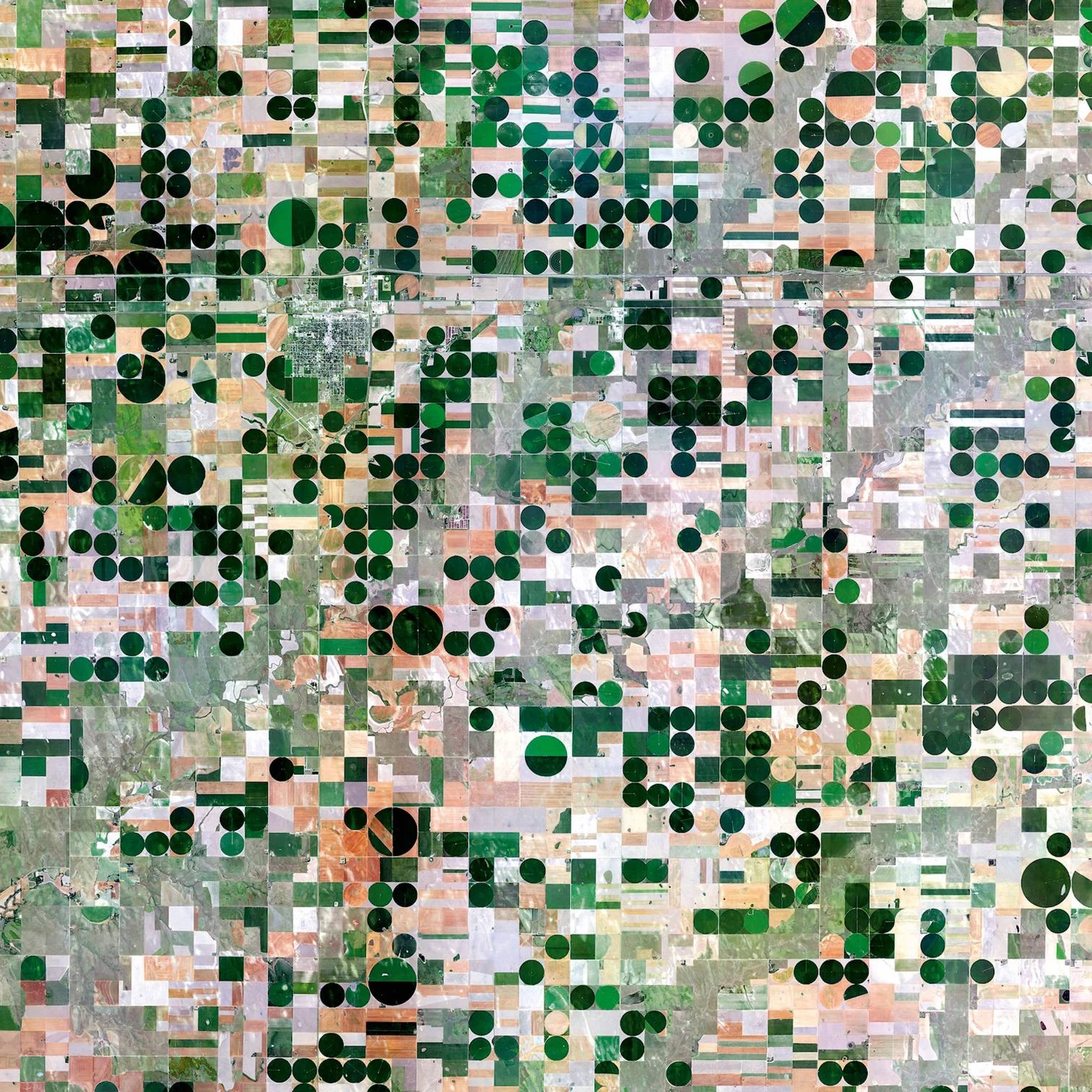
The digital universe, which so many have hailed as a miraculous cure for the tribulations of the material world, nevertheless has limitations deriving from our human condition, or better, our biological condition as thermodynamic organisms that need a flow of negative entropy to survive and reproduce. We are not yet virtual beings, and true as it is that man does not live on bread alone, our own symbolic food requires flows of energy to be conceived and distributed, so the same system of the arts cannot be maintained without a material base that after all is also an energy base. Rudolf Arnheim brilliantly wrote on the relation between art and entropy, and his essay on order and disorder uses the psychology of perception and the theory of information to defend the evolutionary advantages of structural order, and propose it in the field of aesthetics as a defense against the confusion of the world, where the catabolic erosion of form is in conflict with the anabolic construction of cognitive life and material techniques. As he points out, homeostasis alone is not enough, because a meaningful life requires something more than organic balance, but without that thermodynamic primum vivere, nothing can come about.
The proposal for a tension-reducing formal order seems to be bring art to the Freudian pleasure principle, a perhaps anachronistic task if placed in the framework of contemporary convulsive beauty, let alone in an intellectual landscape that denies legitimacy to any kind of activity or object lacking in subversion or provocation. Momentarily leaving aside the question of whether art that soothes or consoles is plausible in our times, the near oxymoronic nature of useful art that we attribute to architecture allows us to examine this discipline independently, and to consider whether it should aspire to express the turbulences of the times or, on the contrary, build orderly places that provide protection and shelter in an inclement world. To go for the second option is to advocate an architecture of high formal clarity and rigorous continuity with the existing, where simplicity and economy of means reduce its impact on the planet’s limited resources, and where the determination to reuse what already exists and what we have already learned has no qualms about using discredited mimesis as an information and thermodynamic tool. In the face of the material and energy waste of capricious disorder or interminable experimentation, the gradual improvement of the orderly forms that are reproduced through mimesis have an economic, social and intellectual logic that makes a persuasive realism out of its abstraction.
An Urban Humanity
The Built Globe
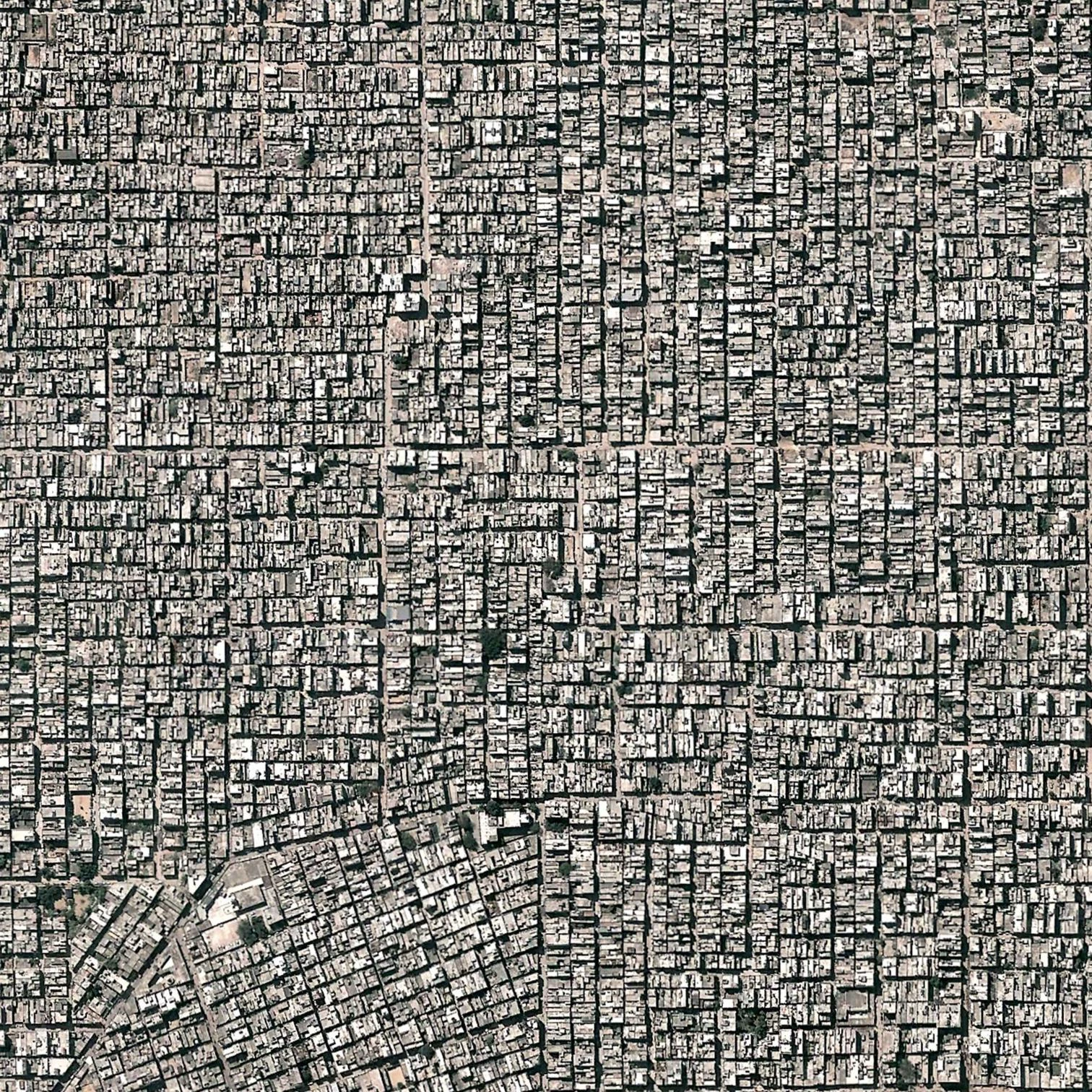
Already more than half of humanity lives in cities, and the urbanization process advances at so vertiginous a rate that we will soon be able to describe the planet as a built globe, with its population agglomerated in metropolises and the surrounding environment transformed into an artificial landscape. The city, that extraordinary invention of our species, has grown and multiplied under the pressure of the demographic and productive explosion brought on by fossil fuels, without the formidable development of telecommunications – as Edward Glaeser has stated – diminishing the convenience or the desire of living close to one another. Crucibles of scientific and technical innovation, and to the same extent scenes of intellectual and artistic mutations, cities are our most valuable heritage: a wealth that rests not only in its buildings but also in its people, because even more valuable than its urban fabric is the dense social tapestry that weaves together the interests, ideas and affections of its inhabitants. In this network of connections lies the essence of the urban, and from this mesh of relationships comes its potential and lure, manifested in the territory like a magnetic field that is irresistible to rural populations, a multitude of iron filings dragged beyond remedy towards the metropolitan magnet.
These centripetal forces responsible for the migrations from countryside to city are expressed in the exponential growth of both the urban dimension and the pathologies associated with scale, provoking the contradictory emergence of other centrifugal forces that push large sectors of the population to remote suburban peripheries, where the qualities of civic life are denatured or weakened. At the same time, the dispersal of constructions degrades the natural environment, altering its morphology by modifying its uses, and colonizing the landscape by filling it with irreversible works of engineering and architecture. What elsewhere I have called horizontal Babel, formed by sprawl, is thus neither real city nor countryside, and yet the contemporary exuberance of energy has allowed it to spread through the five continents, driven by metropolitan malaise and the nostalgia for nature while undermining civic virtues and pastoral beauty. The tension between the urban gravitation that brings us together and the centrifugal urge that pulls us toward the peripheries produces a vibration of the essential fiber of the debate on territory and landscape, which has its ominous protagonist in that boundless and characterless city, and the most visible cause of our environmental crisis in its planetary metastasis.
Ecosystems and Flows
Suburban Processses
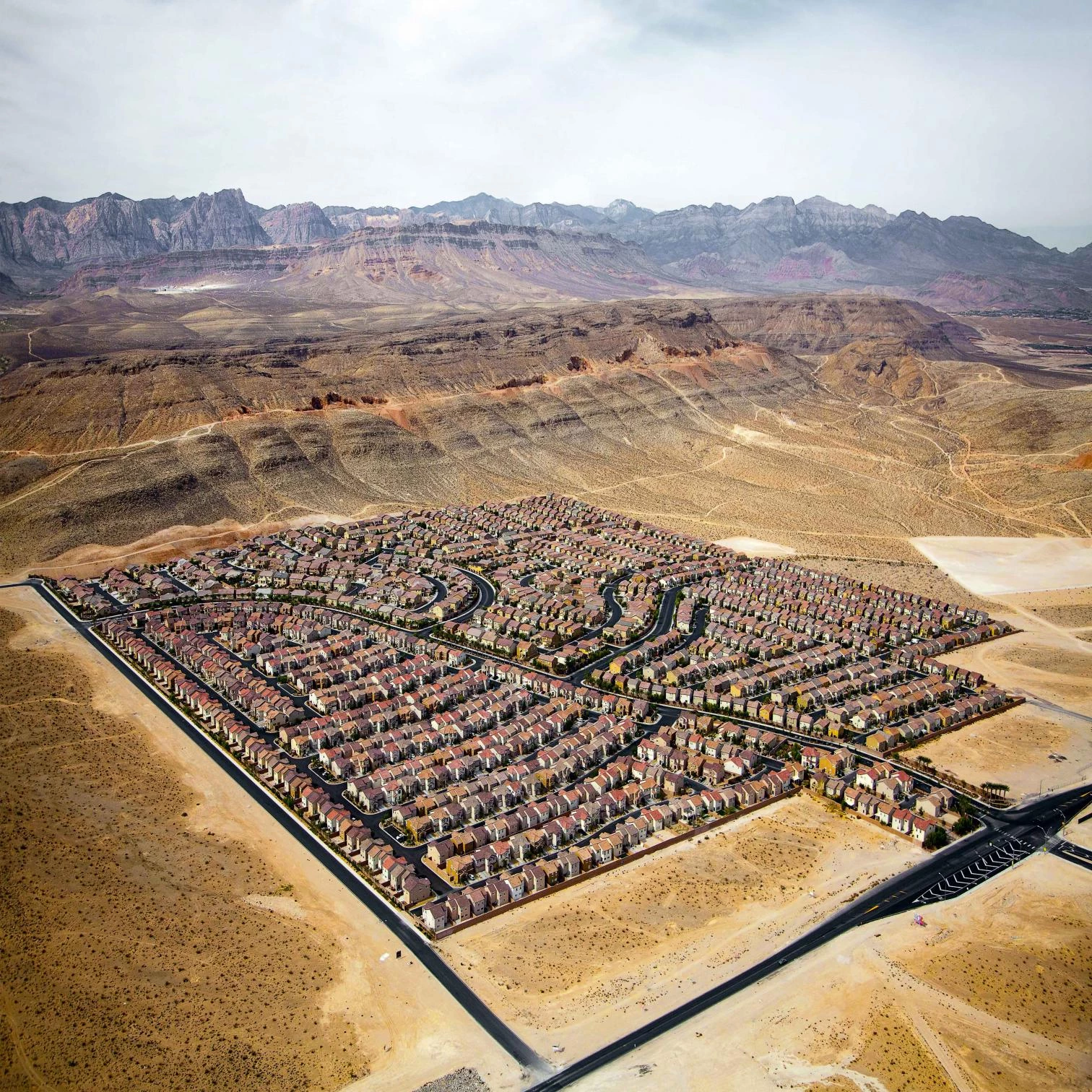
In ecological terms, the conventional interpretation of the city is as an organism that feeds on its surroundings. Inscribed in a long tradition of biological metaphors, but equipped in this case with a solid analytical and quantitative base, the description of urban organisms that crystallizes in the studies of Howard and Eugene Odum presents these as receivers of a continuous flow of energy and materials that enables them to feed their populations, heat and cool their buildings, and transport people and goods – besides building and repairing their physical fabrics –, and also as emitters of waste and heat; in thermodynamic terms, as receivers of negative entropy or negentropy that gives them the capacity to maintain their form or, in Spinoza’s formula, ‘persevere in being’. This organic view of the city, which in likening it to a living being holds that it must have nourishment – or in physical terms export entropy –, requires an exact definition of its limits, something unfortunately less precise in the urban than in the biological sphere, where the skin of an animal or the membrane of a protozoan forms a relatively clear-cut boundary between the individual and the environment that sustains it.
Naturally it could be argued that living organisms should not be understood exclusively as individuals either, because they are an inextricable part of populations and these in turn subsist in dynamic equilibrium with others of different species in symbiotic or trophic relationships. All told, contemporary sprawl, along with the colonization of interurban space by huge transport, production and consumption infrastructures – from airport cities, container ports or logistical centers to industrial complexes, commercial centers or theme parks –, have turned cities into organisms with blurry edges, not even nodes of communication networks, and can only be described as higher-density zones in a built continuum. The first conurbations have given rise to vast territories that are compactly occupied, fogging the boundaries of cities and making urban ecology give way to territorial ecology in the search for a larger-scale field that allows a better understanding of the material and energy bases of the sustainability of human settlements: a scientific, economic and social endeavor that turns our attention from urban fabrics to the infrastructures that organize the territory.
Space or Territory
Key Infrastructures

If the modern eye focussed on spaces that could be repeated indefinitely by mechanical means and the postmodern one preferred places that were depositaries of unique qualities, perhaps our era calls upon us to turn our gaze toward the territory, to be contemplated as the stage for the quantitative logic and dimensional ambition of civil engineering, and simultaneously as a realm in possession of its own geographic, bioclimatic and even historic specificity. Thereby reconciling modern quantity with postmodern quality, the priority given to the territory puts built objects in the larger framework of artificial ecology, allows thinking of architecture as urbanism (while lending itself to considering urbanism with the intellectual tools of architecture), and reconstructs architecture’s dialog with engineering, which was silenced for a time by architecture’s confinement in the leper colony of signs and symbols: a period, incidentally, that has been paradoxically described as a ‘semantic nightmare’ by a notorious author of iconic works, Rem Koolhaas; but a period that also purged the discipline of both the docile subjection to the iron laws of technique and the demiurgic insistence on indefinite growth, thus reviving the spirit of the place, the pulse of memory and an awareness of limits.
In the new centrality of the territory, infrastructures play a clearly essential role, articulating the landscape, as they do, by constructing a voluntary geography that frames uses and channels movements. The great networks for transporting people and merchandise – by land through highways and railways, by sea and air with ports and airports –, for supplying water – from dams to purification plants – and for providing electricity, gas, telephone connections and fiber optics – with power plants, wires and pipes – form a territory also sprinkled with dump yards, vehicle scrap yards and deposits of chemical and nuclear residues, in addition to an immaterial communications mesh that spreads out heterogeneously. This physical and virtual system of networks and nodes serves to channel flows and exchanges, determines concentrations of resources, energy and information, and ultimately defines the patterns of occupation and density of urban landscapes. Programmed to last a long time and forced to combine the necessary continuity with the inevitable change, infrastructures are a register of our past and a mold for our future, so the decisions that are made in this field take on particular importance, conditioning urban models and architectural types.
Healthy Density
The Compact Models
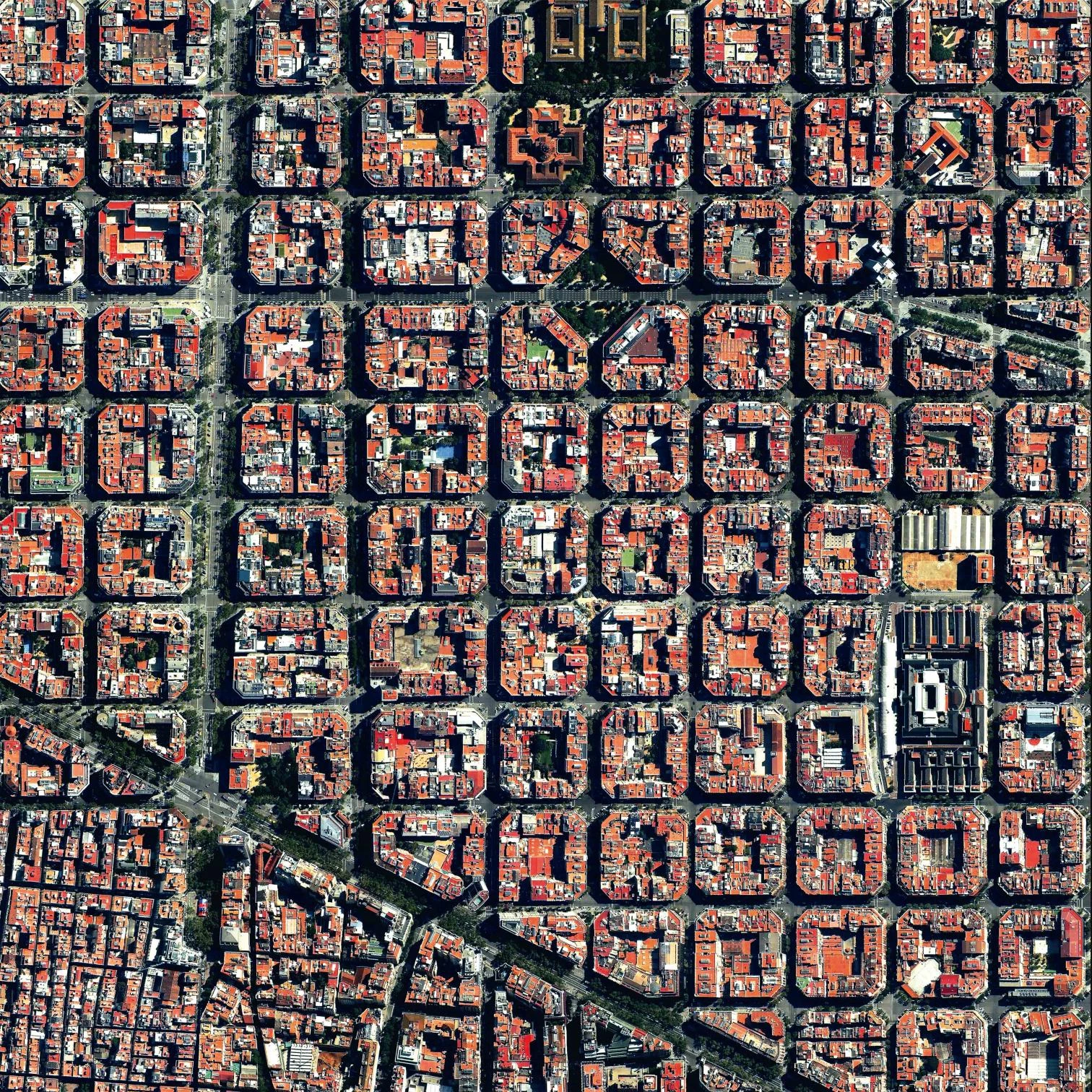
Barcelona Eixample
When we consider the city under the ecological prism, in the current context of energy scarcity and climate change, no parameter is more decisive than density. The compact city, which is not so much the metropolis of skyscrapers as it is the classical Mediterranean town, is the territorial occupation model most readily described as sustainable: that which incurs fewer material and energy expenditures in raising urban infrastructures, which because they are shared by many, are less costly; that whose buildings consume less non-renewable energy and resources, both in construction and in maintenance during their useful lives, thanks to the advantageous shape coefficient that compactness gives when the relation between the area it encloses and the volume enclosed is reduced; and also that whose density reduces the time and the cost of vehicular commuting by providing the direct contact that is the sign of urban life and the engine of the intellectual, artistic and interpersonal communication that makes cities drivers of social change. The sprawling city, in contrast, which historically arose from the garden city, associated with a return to nature, paradoxically turns out to be less green than the compact one, precisely owing to the greater material and energy costs needed for its vast infrastructures, inefficient constructions and long commuting times.
All this is not to say, of course, that the compact city can do without taking non-renewable resources and energy from the environment, whatever way we set the limits between them, or without dumping residues and emitting carbon dioxide into it. The dream of self-sufficiency, which once nourished so many anti-urban utopias, now comes true in projects for new cities like the well-known Masdar, which the team of Norman Foster is building with the aim of making a town that produces its own energy, recycles all its wastes, and emits no carbon dioxide into the atmosphere – thus avoiding consumption of non-renewable resources and global warming –, but it will take some time before all the objectives are met. While we wait for that day to come, cities will have to continue exporting entropy (or importing negentropy), and the familiar compact town will continue to be our best option for communal life: a solution that is perhaps still suboptimal in the ecological sphere, but probably unsurpassable in the social and cultural, providing spaces for intense and spontaneous interpersonal relations of the kind that make ideas circulate and stimulate innovation, attracting financial capital with its dynamism and human capital with its opportunities and quality of life, all of these being characteristics intimately linked to density.
Threatened Commons
Landscapes in Flux

Beyond its enormous economic and energy cost as well as its negative impact on the ecology of the planet, sprawl has had the side effect of reducing the public sphere, cutting down on the collective spaces that characterize the compact city. These are the places where shared values are expressed chorally, but also those where individual paths meet and fuse, and this double function enriches cities with a social capital of connections and confidence that is hard to replace with a judicial architecture of laws and contracts. Both the growing privatization of residual natural spaces and the commercial administration of urban and suburban places dedicated to leisure transform the public domain, and this process, which affects the entire territory by fragmenting it and extracting its pieces from the collective sphere, has an even greater impact on the city, whose civic nature requires vertebration through shared spaces, which in traditional urbanism have always been of a physical nature, and which contemporary sprawl has sought to replace, so far unsuccessfully, with virtual spaces, whether those of the media or those of the emerging social networks, whose penetration in current society brings with it both promises and fears.
Although it seems to have become routine to say that the new generations simultaneously inhabit the immaterial labyrinths of the web and the physical precincts of their biological existence, the truth is that all movements engendered in the digital womb have ended up manifesting themselves, gaining visibility and acquiring legitimacy in the worn public space of the traditional city, whether the fashion trends that scouts look for on the streets of Tokyo and New York or the political mutations that young Arabs have brought on with their presence in the squares of Tunis or Cairo. No doubt we are faced with a landscape of technical and social changes, but it cannot be ascertained that these mutations will be expressed only, or preferentially, in virtual realms. We inhabit material spaces, consume irreplaceable resources and degrade energy to maintain our social organization and our own organisms. In this historic crossroads, the digital revolution will not save the furniture of the physical city, which must progressively abandon the model of the horizontal Babel lest it endanger the future of our species on the planet, and embrace the alternative – density – as something that, freed of its negative associations with pollution and traffic, can effectively offer a more responsible and sustainable way of inhabiting the world: a way of living close together that is more economically efficient, more culturally stimulating, and more gratifying in terms of interpersonal relationships.
Metastasis of Icons
High Architecture

Frank Gehry’s Guggenheim Museum, Bilbao
The physical and social fragmentation of the contemporary world, which has fractured urban fabrics and community ties, has engendered the self-withdrawn culture of narcissist individualism, replacing a dense mesh of political, intellectual and artistic references with the fleeting glimmer of spectacle. This ‘society of the spectacle’ that Guy Debord theorized on is articulated around a galaxy of images that are in permanent renewal, sprinkling the anomie of its landscapes with memorable icons that seek to fix themselves to people’s retinas by competing in the din of offers, and that often barely manage to be noticed before vanishing like a drawing in the sand. The insatiable appetite for the new devours the torrent of images, and the eddy of novelty drags events, works and people towards an abyss of oblivion: nothing seems able to escape this collective amnesia. Because of the permanent character of its constructions and the painstaking nature of its processes, architecture would seem immune to this empire of ephemerality, but in the long run it too has succumbed to the law of spectacle, and from preliminary sketches to finished works its images have provided symbolic fuel for media-savvy governments and corporations, offering numerous city-branding icons that generate tourist income and collective pride.
Like haute couture and elite competition, what we might call ‘haute architecture’ has in the past decades produced media icons that naturally have historic antecedents – no need to go back to the Seven Wonders of the ancient world to establish a chain that has its inevitable links in the New York Guggenheim, the Sydney Opera House, the Pompidou Center and the like –, but never proliferated so dramatically, becoming references for every single small town or modest institution that wants to increase its visibility by joining the frenetic carrousel of spectacle. Nevertheless, the profuse multiplication of icons devaluates its symbolic and even publicity content, making it lose value like money issued in excess, and diminishing its impact like a scream in a yelling crowd. So even objects of extraordinary beauty get lost in the cacophonic labyrinth formed by a multitude of works competing for the spectator’s attention, and this authentic metastasis of icons ends up being perceived as an ailment afflicting the physical body of cities and the doctrinal body of architecture, helpless against the invasion of strange organisms that challenge its normative condition, and that if able to be absorbed as exceptional occurrences, become toxic when multiplied without control.
Visual Fatigue
The Tactile Dimension
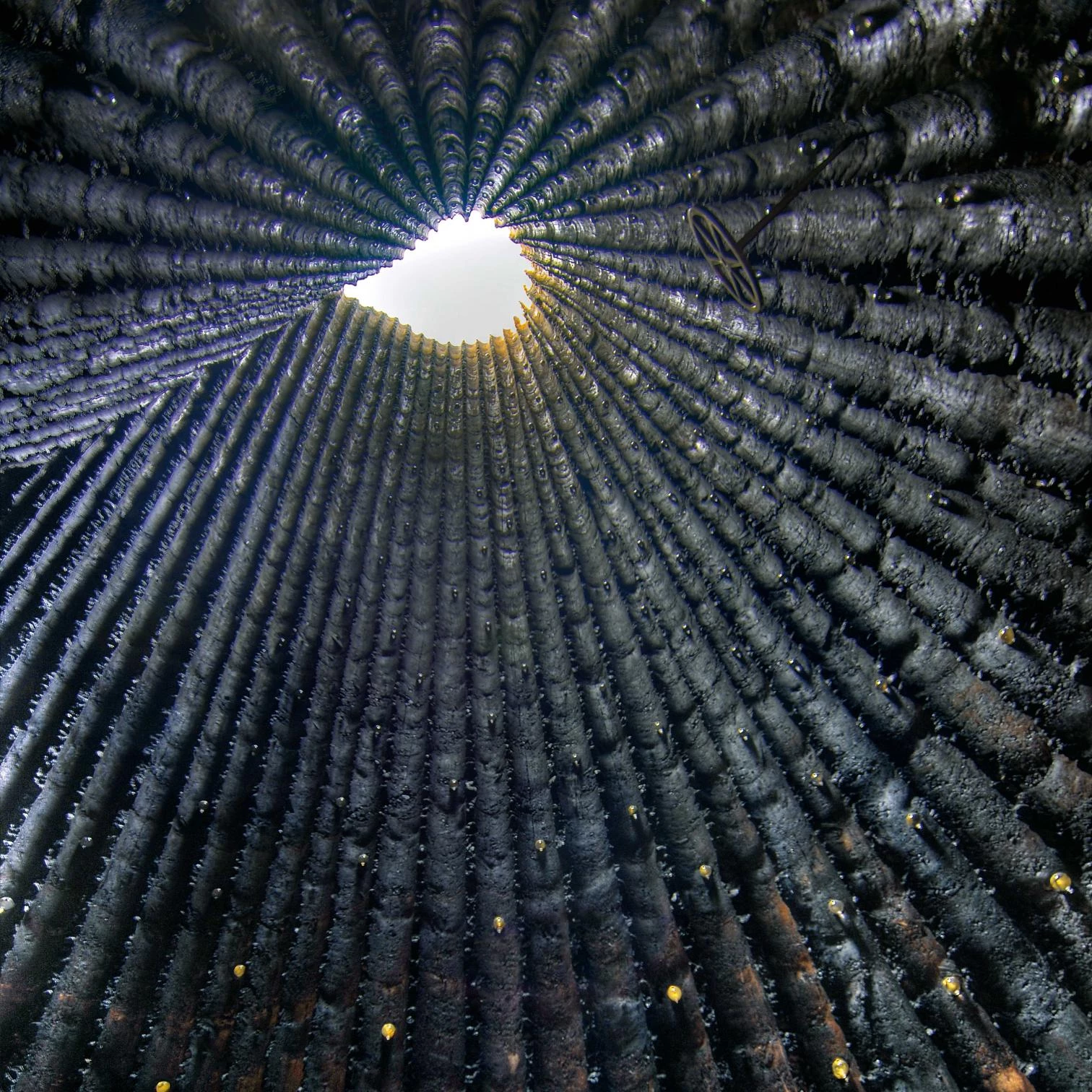
Peter Zumthor’s Bruder Klaus Field Chapel, Germany
Overwhelmed by the abundance of images, architecture questions the protagonism of the visual, which at some point I have described as the dictatorship of the eye. Visual thought has always been very present in the work of architects, who interpret the world, appropriate places, and conceive their works through the gaze. In fact even metaphors taken from other fields, such as Schopenhauer’s much repeated aphorism by which architecture would be ‘frozen music’, ultimately refer to a rhythmic condition that in buildings is perceived not with the ear but with the eye. But this hegemony of the eye has often been criticized, and no longer simply because architecture is a three-dimensional art – for the perception of which the moving eye of the observer or the camera suffices, as in Le Corbusier’s celebrated promenade architecturale –, but because we are talking about a habitable art, and its intimate connection to the human body is impoverished if we reduce it to the exclusively visual. Adding to this phenomenological criticism nowadays is the visual fatigue that results from the oceanic inundation of fleeting images, and both circumstances call for a sensorial expansion that could put an end to the monopoly of the eye.
Many intellectual and artistic currents converge in this revision, but perhaps the most significant ones come from Heidegger and his skepticism towards modernity, which as we know infiltrated architectural discourse through Norberg-Schulz and comes down to our days through the historical and critical texts of Kenneth Frampton, where recovering the tectonic and the tactile is a strategy of resistance to modern anomie and the phantasmagoric invasion of images, which are associated with the corporate logic of late capitalism and the seduction of the spectacle in media culture. This phenomenological revision, whose most defining element is the shift from indefinite space to unique place, and thus from quantity to quality, is summed up in the defense of the genius loci against the Zeitgeist, or the spirit of the place against the spirit of the time, but it also has an anthropological dimension that values archaic materiality and its structural expression as much as multisensory perception, and more specifically the tactile one, no matter how often this condition is visually expressed in textures that evoke the touch of a hand, materials that bear the mark of a foot, or else colors associated with thermal sensations: in the end, a hybridization of visual thinking and expanded perception.
Thermal Aesthetics
Atmospheric Arts

Olafur Eliassons The Weather Project, in Tate Modern
Visual obsolescence and the contemporary climate and energy crises have together brought about a movement of aesthetic revision that seeks to face the arts with the dilemmas of the world, and at the same time awaken in them the desire to express the state of our times. This aesthetic, which Bruno Latour has described as atmospheric, endeavors to reconcile the humanities and the sciences, mixing these two cultures to connect social values to natural facts, and proposes a new conception of politics that gives a central role to elements like territory, infrastructures or landscape where society and nature meet. With its delicate attention to climate control, to the tactile and to the thermal, atmospheric art enters into resonance in architecture with a long critical tradition that has explored the physiology of buildings, avoiding the priority usually given to anatomical considerations: a tradition where air or water is as important as stone, glass or steel.
Naturally this gaseous or liquid architecture does not preclude the material solidity of buildings, but it shifts emphasis towards services and utilities, supports of thermal comfort as well as foundations of energy sustainability, and therefore physical bases of both a thermodynamic aesthetic and an ecosystemic ethic. Reyner Banham must be mentioned in this section because The Architecture of the Well-Tempered Environment pioneered a field of study that would be much present during the oil crises of the 1970s, to fall into oblivion during the decades of cheap fuel and return to the fore of debate in our years of energy and climate crisis. Making a virtue of necessity, atmospheric architecture tries to use scarce resources responsibly while recovering the tactile pleasure of thermal fluctuations, environmental humidity or air movement, abandoning costly and narcotic modern homogeneity for a return to traditional building procedures that, with less technical complexity and lower energy consumption, maintain comfort without ceasing to provide sensory stimuli to bodies that had forgotten the joy of feeling the sun or the breeze on the skin, preferring lukewarm shade to the blinding brilliance of mechanical reason.
Less but Better
The New Austerity
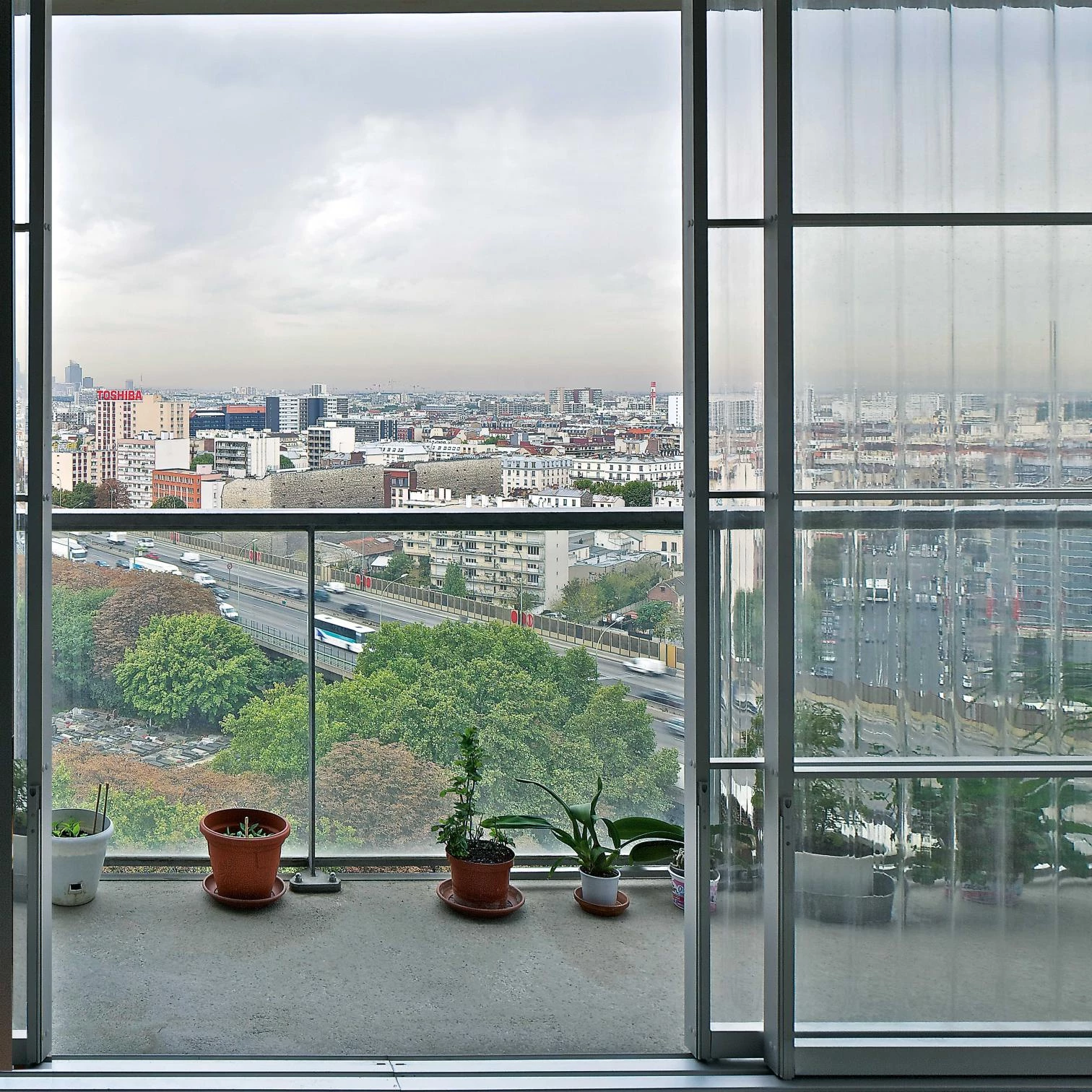
Like all crises, the one we are currently experiencing carries seeds of change. Occasionally lost under the smoke and mirrors of catastrophic information and always hidden by the suffering and anxiety that the dislocation of expectations and habits causes, these seeds encapsulate a possible future, one that is formed in the tribulations of the present but that is perhaps more desirable with respect to collective morals and individual happiness. This responsible and austere future, which we may not even choose because it is imposed by circumstances – or by awareness of the limits to growth in a finite planet, which amounts to the same thing –, does not necessarily have the form of an ascetic and penitential desert. On the contrary, the renunciation of superfluity in architecture and in life can be a source of beauty and pleasure: beyond economic and thermodynamic logic – if after Georgescu-Roegen we can still separate these disciplines –, the depuration of demands and desires is an aesthetic and ethic gymnastic that yields healthy fruits in both the physical and the immaterial sphere. This is why we are fascinated by anonymous architectures that are daughters of necessity, or ethnic arts where matter and wonder crystallize in essential forms.
The younger generation, inserted in a landscape that is at once laconic and hedonist, needs few calls to an austerity that its members experience in their own lives. For them, doing more with less is not a proposition but a fact, as well as a trait that is almost inscribed in their DNA. Both their interest in development projects – working in environments marked by scarcity – and their readiness to accept the limitations set by sustainability trace a panorama of adaptation to the demands of crisis that is very different from that of their elders, who are immersed in the winter of their discontent and incapable of spotting opportunities in a scenario that they perceive to be cluttered with the ruins of their hopes and projects. Whether we like it or not, a period of collective mutation brings social fractures and individual suffering, but it can also give rise to a better city, more refined architecture and more relevant arts. Doing less but better can be a desirable motto for administrations with budget problems or companies undergoing cost-cutting restructuring, but it is also a maxim applicable to creative paths or personal lives. There is no need to recall Mies’s ‘less is more’ to praise the virtues of streamlining; but we would do well to keep that in mind when austerity is presented to us only as deprivation: storms clear up the air, and with ruined expectations, the miasmas that have made the stale atmosphere of our times almost unbreathable will disappear too.
Ordinary and Mortal
Traces of Life
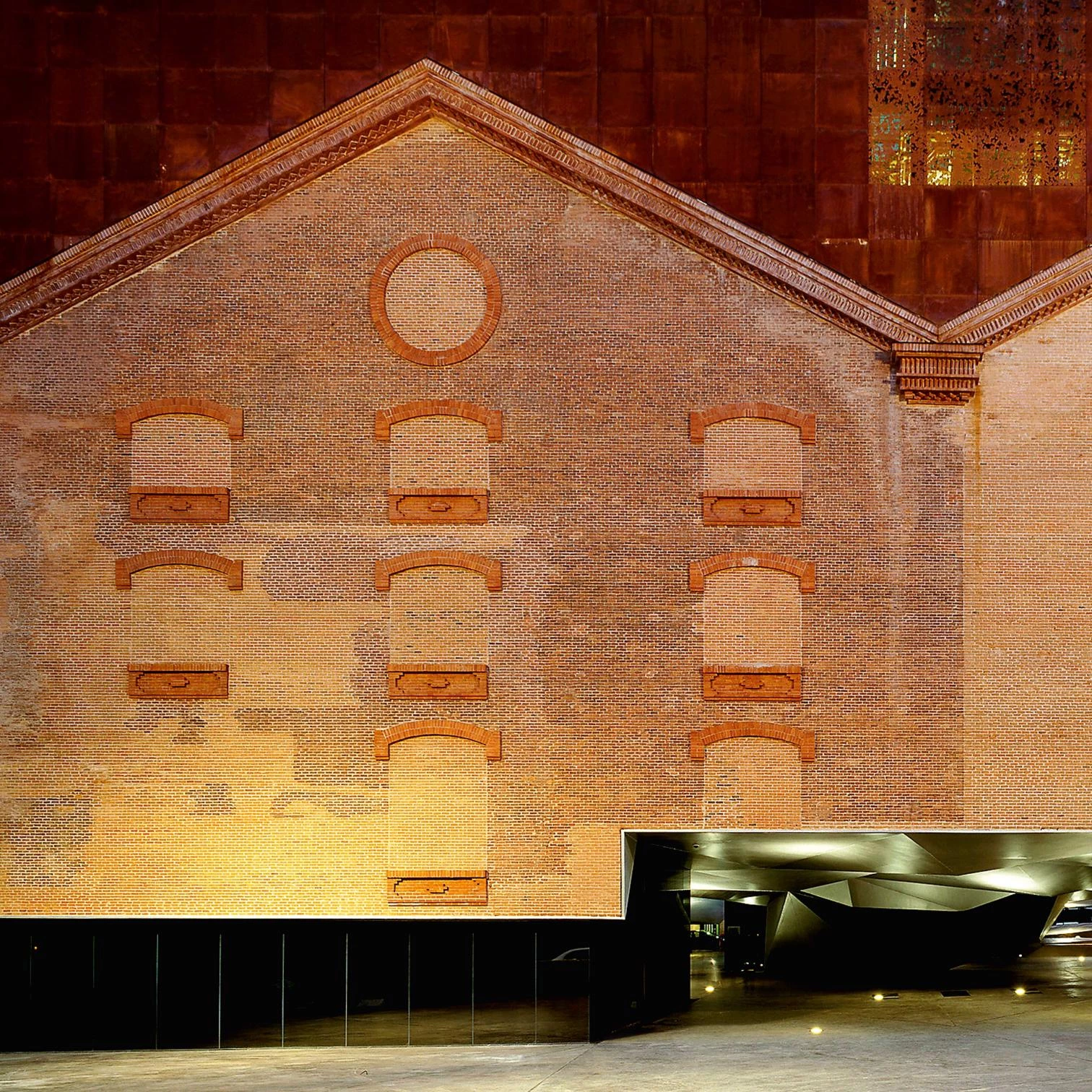
Docile or rebellious acceptance of the planet’s limits could be an intellectual exercise preparing us for the more difficult and painful acceptance of the temporary limits of our own life and the perishable nature of our material works. We describe architecture as a three-dimensional art, but we should really situate it in a four-dimensional space because in the end, time is as important as the three axes of coordinates that place works in the world and regulate balance in our inner ear. Time – that fourth dimension which ‘also paints’, in Goya’s words – ‘also builds’, giving buildings the patina of age and eventually eroding structures as it wears away our organism, in a process that we can decelerate through the maintenance and constant repair of works and bodies, but which we do not know how to stop other than by freezing persons or projects in soulless urns. Even so, it is easier to accept our mortality, however unfathomable the idea that the individual conscience disappears, than it is to accept the mortality of our works, and thus that of architecture itself, because we hold on to the conviction that we leave marks in the world, engraving our vital paths on the planet’s memory. But the globe is an amnesic sphere where entropy imposes its obstinate law, ruining constructions, decomposing materials and erasing footprints, which in a wink of geological time will have vanished like a trace of smoke.
Although some might in this hear the Baroque echoes of Valdés Leal and his Finis gloriae mundi, this reflection would on the contrary like to see in the fragility of life a motive to participate in its brief path more intensely. In the blink of an eye, in ictu oculi, we disappear, as do our works and footprints; but in this ephemeral bat of an eyelash are effort and sloth, affection and indifference, decency and indignity. The Horatian carpe diem taught us not so much to seize the day as to harvest them, and I think that this ambushed parable of the talents remains pertinent to societies and individuals, torn between the anthropic Scylla and the entropic Charybdis, between a world shaped entirely by man and a time that inexorably destroys lives and works. Our works and our days have no other grounds than our mortality, and yet we must go about life as if that sure extinction did not form part of our own vital horizon. The theologian Dietrich Bonhoeffer taught our generation to live in the world etsi Deus non daretur, as if God did not exist, and maybe today we ought to rewrite his maxim by affirming the need to live as if death did not exist or, better still, Clausius pemitting, as if entropy did not exist, etsi entropia non daretur.

